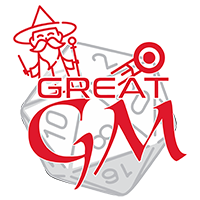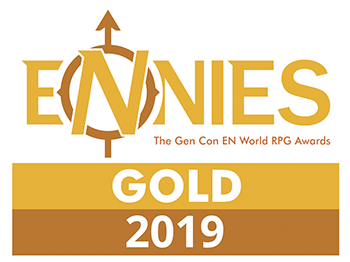Midsummer Festival
The sun rises and sets every day but there is one time where it seems it will never fade from the skies. The Midsummer Festival is celebrated all throughout the Entwining Sea in association with all of the chief deities worshipped by the seven nations that control the region. The festival is celebrated differently among the seven nations but each celebrates it and is often considered one of the most peaceful weeks of the year with stories of wars being halted to celebrate the week.
History
The Midsummer Festival has been celebrated in the Entwining Sea region for thousands of years, and the event is generally observed by many other groups across the lands of Istari. The celebration was first observed by the many druidic circles that see the week as a celebration of the height of the lifeforce of the land. As the kingdoms, governments, cities, and nations grew so too did the celebration of many rural festivities within these realms.
In the Entwining Sea region, this festival becomes popular under the Slyvanosian Regin when the worship of Gozreh (god/goddess of nature) was at its height. It was one of the few times that slaves had no work and were given a break that had to be followed by the elves. Even after the Slyvanos Kingdom lost territory and influence in the entire region the festival had taken root and was widely celebrated even as the Rema Empire came to power to dominate the region. As the worship of the seven gods continued each religion changed bits of the festival to fit into the worship of their god.
Execution
These are among the most common ways that the Midsummer Week is celebrated by those who worship the gods of the Entwining Sea. It does not cover every town, village, and city that celebrates it but does cover the most common celebrations.
Desna: The worshippers of Desna celebrate this holiday as the clearest day to navigate. It is also seen as the best week to examine the stars and preparing for a journey. It is considered good luck to leave the week following the festival. A special treat is baked for this occasion known as sun cakes to celebrate the week of the rising sun.
Gozreh: The worshippers of Gozreh celebrate this holiday for the life force that comes with it. It is seen as Gozreh's height of femininity as she transitions from her female form to her male form which reaches its height during the midwinter festival. Rituals observed are the building of a large wicker figure in the form of a woman that is set ablaze at the height of the sun's zenith. Dancing and drinking are then held to the height of the moon which marks the end of the festival.
Abadar: The worshippers of Abadar do not as enthusitcally embrace this celebration as the other worshippers of the other gods do. They welcome the time to relax and focus and to efficiently take the most time off in the shortest time period. Most worshippers embrace laws, order, and efficiency and see that a break from the normal workweek as beneficial to running any sort of civilization. Most worshippers take this time to plan for future projects, or to build social connections among the community they live in. They have no special tradition or rituals outside of putting off anything that could be considered work and often have a singular party on the day of Midsummer itself.
Torag: The worshippers of Torag celebrate the Midsummer Festival as a time when the world was forged by Torag and his kin. The whole week is celebrated by gifting close friends and family with gifts crafted for the occasion. A popular gift is the symbol of Torag carved from wood, forged in metal, or entwined from plants. It does not matter what it is made from as long as the gift was created by the individual to give away. Food and drink are often gathered for the week of feasting with a favorite being sun cakes.
Cayden Cailean: The worshippers of Cayden Cailean seem to be in a state of constant partying as they seem to always find an excuse to have one. The midsummer festival is no exception and is celebrated with food, drink, games, and plays. Their celebration like the others takes place over the whole week with a play being held on Midsummer day itself. The play varies but the common elements are usually about how the sun looks to lounge in the sky and a parade of characters from the moon, clouds, mountains, and streams try to convince it to move but ultimately fail. It is not until the sun's wife comes along and nags him to do his job does he finally begins to move, and in the process starts to hang out less in the sky. It is fairly popular and enjoyed across many rural areas that celebrate midsummer.
Pharasma: The worshippers of Pharasma are seen as the soberest of the worshippers of the 7 gods of the Entwining Sea but even they find merriment from celebrating Midsummer. They celebrate the week as a time for marriage and open their chapel and churches for all who wish to marry. Families offer a donation to the church of Pharasma and are then wedded by a priest who then gives the couple a fortune of their marriage. This fortune varies but often it is a prophecy on how to obtain a successful marriage which some take to heart and others doubt but anyone married in the church receives one. In addition to the marriages, a celebration is held for those children who have become old enough to become adults. It is a week that many look forward to.
Saenrae: The worshippers of Saenrae celebrate the week of midsummer by holding a ceremony to celebrate the healing power of Saenrae as well as to remember the promise of banishing the undead. The celebration is to remember a time before the sun governed over the land and nothing but darkness and death covered it. The ceremony reenacts the actions Senrae took to banish the undead, and through her sacrifice ascended to godhood and brought her healing power through the sun to everyone. Feasts are held and bright fires are carried into the night to always remember that her light reaches even into the darkest places. Sun Cakes are baked and eaten with almost every meal during this week to help remind the followers of Saenrae of this tenat of their faith.
Observance
Midsummer is always on Aban of the fourth week of Nordul. The exact date changes but the time period is always the same. Some places only observe the midsummer day as the holiday, some the week of the midsummer, and others the week before and the week during. This is all in accordance with the Torathian Calender.
Primary Related Location
Remove these ads. Join the Worldbuilders Guild









Comments